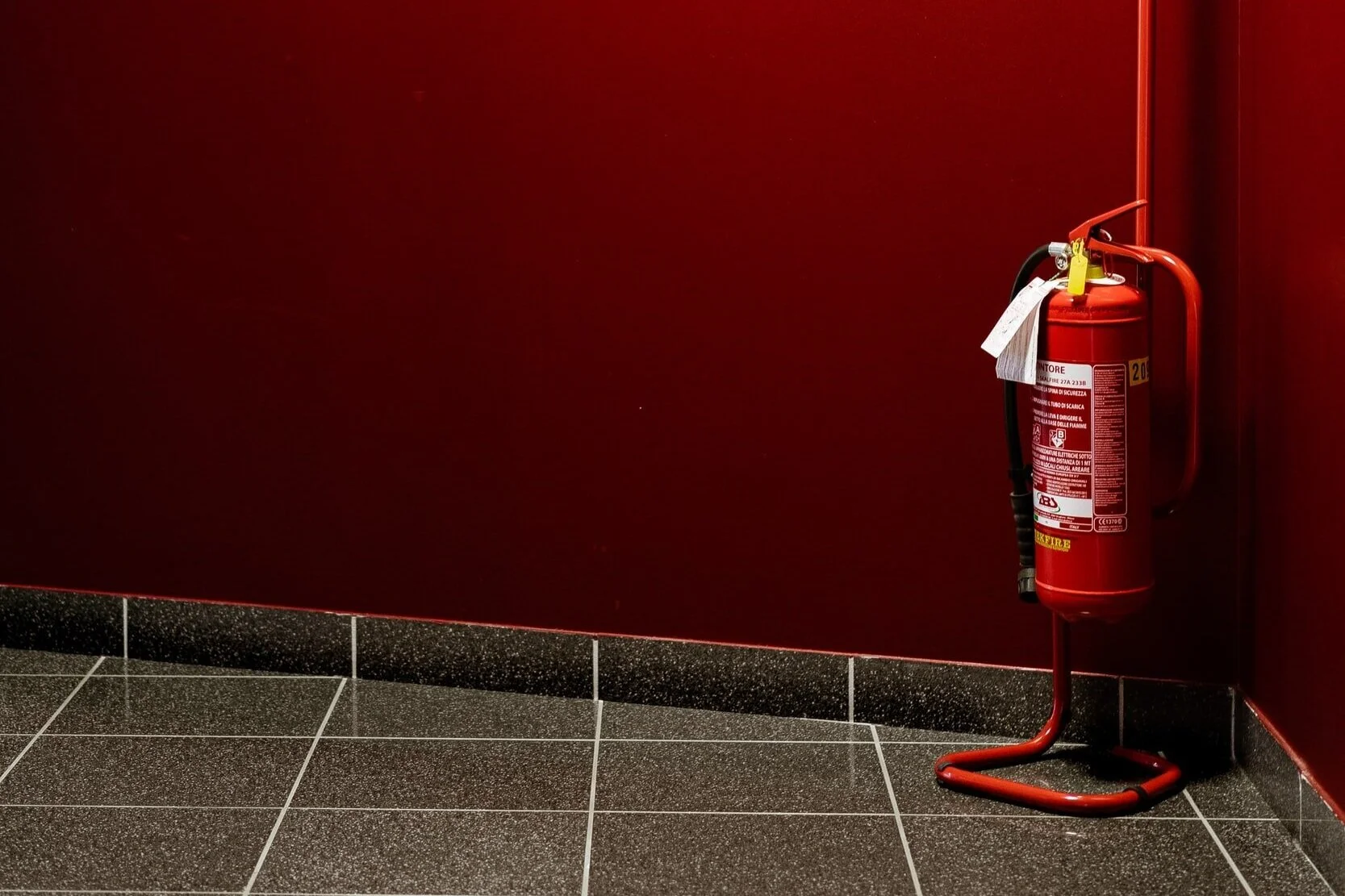Understanding fire class codes and fire extinguisher colours in the UK
As part of our ongoing free Fire Training for employers guidance in this article we aim to help you understand the classes of fire and five main fire extinguishers types in the UK used commonly in the workplace to deal with the different types of fire that occurs:
A type of fire is officially known as Class of Fire and the relevant fire extinguisher types are identifiable by a uniformed colour coding system.
The 5 fire extinguisher types and colours that can be found are as follows:
Carbon Dioxide (CO2) – Black
Foam – Cream
Powder – Blue
Water (including Water Mist) – Red
Wet Chemical – Yellow
In the event of a fire, its important that you and your staff, when suitably trained with an accredited fire training course, can identify these extinguishers by their colour.
Identifying the correct extinguisher is also critical to the safety of its operator alongside its performance in tackling the fire.
Remember - Fire extinguishers are designed to tackle incipient fires; if you don’t know what is burning or the fire is growing rapidly do not tackle the fire and immediately evacuate making sure the alarm has been raised and the fire brigade has been called.
Before we identify the types of extinguishers let’s first look at the various fire classes:
Class A (Solids)
CLASS A fires are fires involving solids. Wood, paper and textiles.
This is one of the most common types of fire because solids are the most common type of fuel and one that is hard to eliminate.
The only type of fire extinguisher you should use on a CLASS A fire is the water extinguisher. This is the most popular type of extinguisher because it can handle most fires involving solids. But, as a conductor, it should never be used near live electrical equipment. Water Mist extinguishers are also suitable for CLASS A fires.
Class B (Flammable Liquids)
CLASS B fires are fires involving liquids. Many of the fluids, liquids and chemicals used in workplaces can be flammable or explosive. Like cleaning fluids, solvents, fuels, inks, adhesives and paints.
Should a CLASS B fire ignite, foam or powder extinguishers are the best types of extinguishers to attack this type of fire.
Class C (Gases)
CLASS C fires are fires involving gases. This could be natural gas, LPG or other types of gases forming a flammable or explosive atmosphere.
While extinguishers can be used on CLASS C gas fires, the only safe method to attack this type of fire is to shut off the gas supply. The best type of extinguisher to put out the fire only the supply of gas is cut off, is a dry powder extinguisher.
Class D (Metals)
A Class D fire is characterised by the presence of burning metals. Only certain metals are flammable and examples of combustible metals include sodium, potassium, uranium, lithium, plutonium and calcium, with the most common Class D fires involve magnesium and titanium
Electrical Fires – electrical fires don’t have a Classification as such, they are referred to as an electrical risk.
However, fires involving live electrical equipment are an additional hazard and require a certain type of extinguisher. Hence NEVER tackling an electrical risk with a water extinguisher.
Class F (Cooking Fats & Oils)
Deep fat frying and spillages of flammable oils near to heat sources in kitchens can result in a CLASS F fire.
Never leave food or frying equipment unattended during use. The only type of fire extinguisher approved for use on cooking oils and fats is the wet chemical extinguisher. For small CLASS F fires, you could also use a fire blanket.
Fire Extinguisher colour coding
Now that we understand the different classes of fire let’s look at the various types of fire extinguishers in the UK and how they are colour-coded to indicate both the type of extinguisher and its content:
CO2 (Carbon Dioxide)
Colour Coding: Black
Carbon Dioxide (CO2) fire extinguishers are suitable for use on CLASS B and electrical fires. CO2 fire extinguishers are primarily for use on fires of electrical origin. Being non-toxic and leaving no residue, CO2 will not harm machinery or electrical equipment.
Foam Extinguisher
Colour Coding: Cream
Foam or AFFF foam fire extinguishers are suitable for use on CLASS A solid combustible fires (wood, paper, textiles) and CLASS B flammable liquid fires (petrol, diesel, paint, solvents). Foam fire extinguishers create a cooling blanket effect, smothering burning materials and preventing reignition.
Water Extinguisher
Colour Coding: Red
Powder fire extinguishers are suitable for use on CLASS A, B and C fires making them ideal for use in environments containing multiple fire risks. They are highly effective against petrol and volatile liquids which makes them ideal for vehicle protection.
Water Mist Extinguisher
Colour Coding: Red
Water mist fire extinguishers are designed for use on most common types of fire including CLASS A combustible materials and CLASS F cooking oil and fat fires. The water mist can also be used on electrical fires up to 1000v. The water mist fire extinguishers produce extremely fine water mist droplets which have highly effective fire extinguishing capabilities.
Wet Chemical Extinguisher
Colour Coding: Yellow
Wet chemical fire extinguishers are specifically designed for use on CLASS F cooking oil and fat fires involving kitchen appliances and equipment. They are also suitable for use on CLASS A combustible material fires.
To finish this article - whatever you do please remember:
Fires destroy property, cause injuries, and take lives.
One of the key strategies to maintaining a safe workplace and preventing fires is fire safety training.
With proper training such as our brigade approved online In the Line of Fire © Safety Training and equipment workers can eliminate fire hazards and respond quickly and efficiently if a fire breaks out.
If in doubt - get out!
Do you staff require Fire Safety training






